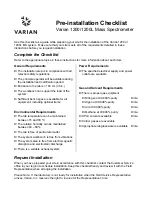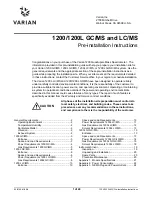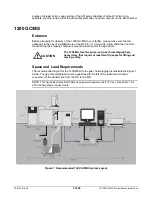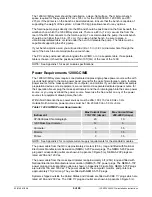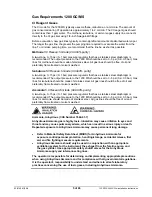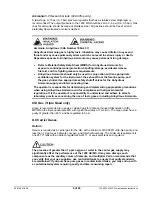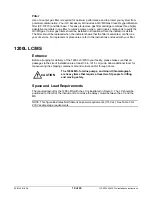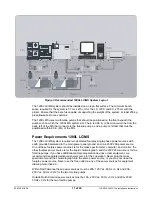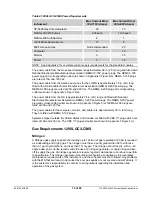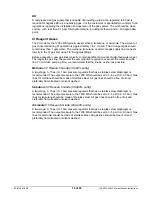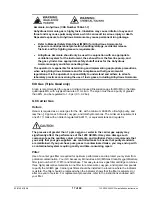
General Requirements
Operating Environment
The customer is responsible for providing an acceptable operating environment. Attention paid
to the operating environment will ensure the continued peak performance of the mass
spectrometer.
Temperature/Humidity
The optimal operating temperature is between 18 and 21 °C (65 and 70 °F).
NOTE: As laboratory temperature increases, system reliability decreases. All electronic
components generate heat while operating. This heat must be dissipated to the surrounding air
if the components are to operate reliably.
The turbomolecular pump temperature cutoff control protects the bearing to prolong the pump
lifetime. A laboratory temperature above 30 °C (86 °F) may cause the pump to shut down.
Operating the MS at optimal temperatures will prolong the turbo pump life.
There must be good air flow around the system. Your air conditioning system must be capable
of maintaining a constant temperature (within operational limits) in the immediate vicinity of the
system. The average steady-state heat load of the 1200L is 6,000 Btu, with a possible short-
term heat dissipation of 15,000 Btu during startup.
Hot air vented from GC column ovens may contribute to room heating and to the resulting air
conditioning load. Ducting the GC column oven air out of the lab reduces this heating effect.
The relative humidity (RH) of the operating environment must be between 40 and 80%, with no
condensation. Operating the mass spectrometer at very low humidity may result in the
accumulation and discharge of static electricity, shortening the life of electronic components.
Operating the system at high humidity may produce condensation and result in short circuits.
Varian recommends that your laboratory be equipped with a temperature/humidity monitor. This
will ensure that your laboratory is always in conformance with temperature and humidity
specifications.
Particulate Matter
Take necessary precautions to minimize particulates in the laboratory environment. A layer of
dust on the electronic components could act as an insulating blanket and reduce heat transfer
to the surrounding air.
Vibration
Ensure that lab benches are free from vibrations, especially those caused by equipment in
adjoining locations. Because the foreline pump vibrates during operation, install it on the floor
beneath the mass spectrometer, not alongside the system on the workbench. This is especially
important when using the 1200L LC, where two foreline pumps are required.
Exhaust System
It is your responsibility to provide an adequate exhaust system. Most compounds introduced
into the mass spectrometer will eventually be exhausted from the foreline pump, along with the
small amounts of oil vapor that these pumps characteristically emit. Therefore, the pump outlets
should be connected to a fume exhaust system. Consult local regulations for the proper method
of exhausting the fumes from your system. LC/MS systems will require venting of the foreline
03-914961-00:6
2
of 24
1200/1200L MS Pre-installation Instructions

